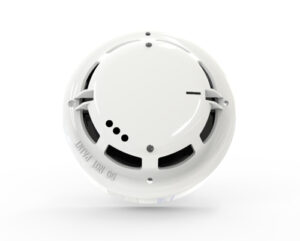 According to the latest Home Office report, false alarms make up 98% of automatic fire alarm confirmed incidents in 2020/21; 90% of this figure is due to faulty apparatus.
According to the latest Home Office report, false alarms make up 98% of automatic fire alarm confirmed incidents in 2020/21; 90% of this figure is due to faulty apparatus.
The research from the Home Office, which was collated from Fire and Rescue services across the country from the last financial year, shows that just 2% of the incidents from automatic fire alarms were a result of an actual fire. Most of the false alarms could easily be avoided with proper maintenance and by ensuring the correct type of life safety product is installed for the environment in the first place.
Commenting on the report from the home office, Shinsuke Kubo, Commercial Director for Hochiki Europe, Middle East, Africa and India, said: “False alarms are a major problem across multiple industries, they have a significant impact on production and ultimately the economy. Building owners who choose to work with installers and manufacturers who understand that no two environments are the same will reap the benefits because the products recommended will be both fit for purpose and properly maintained.”
The London Fire Brigade advise that if you are responsible for managing a property, it is important to make sure the fire alarm system installed is carefully considered for the type of premises and of course the occupancy.
Having said that, technology alone cannot eliminate false alarms. Other key factors must be considered to increase the overall “alarm reliability” of fire detection and fire alarm systems. These are design, commissioning, and maintenance. If these are overlooked, then the reliability of a device will drop. It’s also important to remember that over time, the use of a building may change or be adapted, any changes must be reflected in the design and maintenance of the fire detection apparatus installed.
 “Multi-sensors could be the answer,” continues Shinsuke Kubo. “For complex life safety installation projects which have multiple usage scenarios, or are adapted over time, using intelligent devices can really help reduce false alarms. Modern devices which detect heat, smoke and in some cases, CO, can learn from their environments from the moment of installation. The ACD multi-sensor which uses the S.M.A.R.T. algorithm to continuously monitor its surroundings, is used by customers across multiple sectors from university accommodation, housing associations, theatres, and schools – all of whom have seen a reduction in false alarms.”
“Multi-sensors could be the answer,” continues Shinsuke Kubo. “For complex life safety installation projects which have multiple usage scenarios, or are adapted over time, using intelligent devices can really help reduce false alarms. Modern devices which detect heat, smoke and in some cases, CO, can learn from their environments from the moment of installation. The ACD multi-sensor which uses the S.M.A.R.T. algorithm to continuously monitor its surroundings, is used by customers across multiple sectors from university accommodation, housing associations, theatres, and schools – all of whom have seen a reduction in false alarms.”

